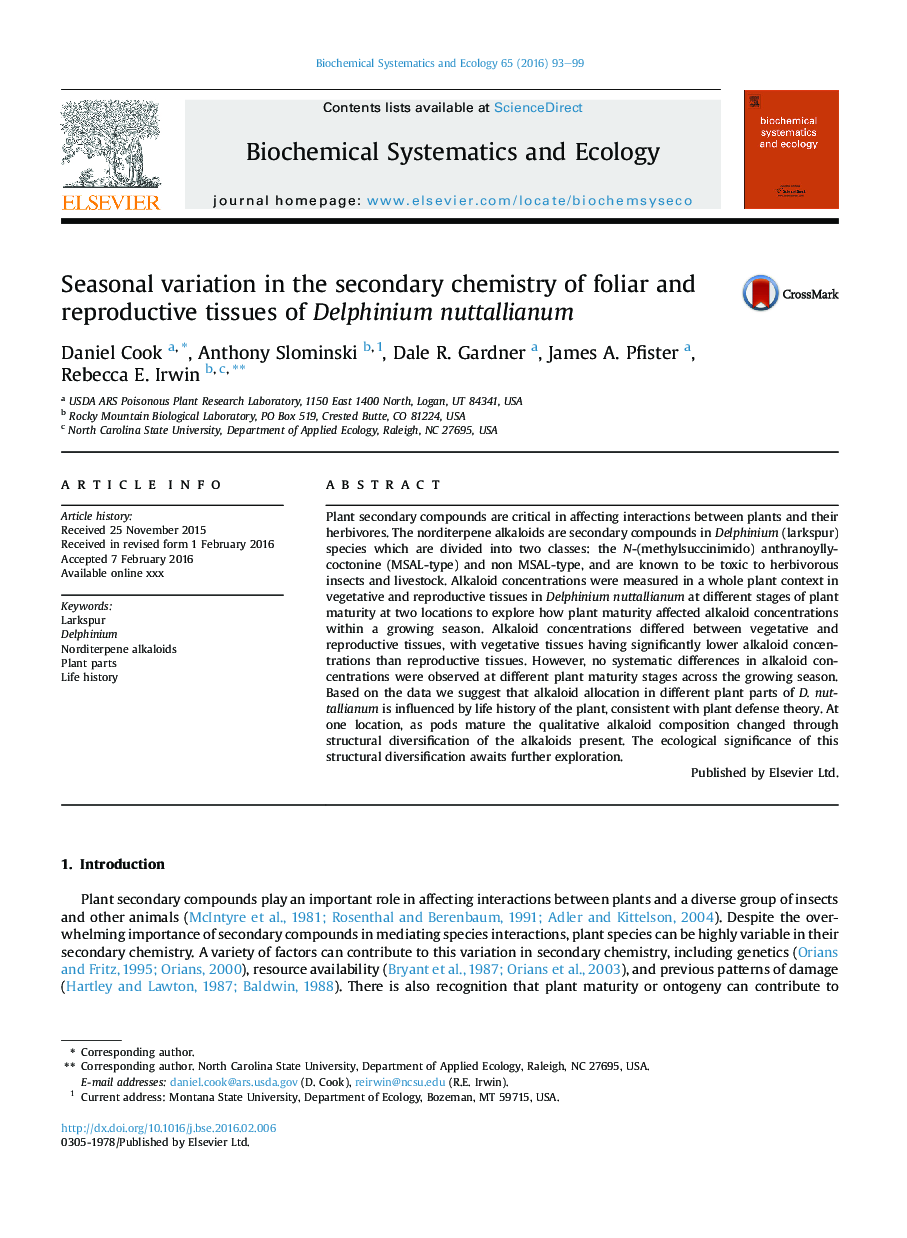| Article ID | Journal | Published Year | Pages | File Type |
|---|---|---|---|---|
| 7767931 | Biochemical Systematics and Ecology | 2016 | 7 Pages |
Abstract
Plant secondary compounds are critical in affecting interactions between plants and their herbivores. The norditerpene alkaloids are secondary compounds in Delphinium (larkspur) species which are divided into two classes: the N-(methylsuccinimido) anthranoyllycoctonine (MSAL-type) and non MSAL-type, and are known to be toxic to herbivorous insects and livestock. Alkaloid concentrations were measured in a whole plant context in vegetative and reproductive tissues in Delphinium nuttallianum at different stages of plant maturity at two locations to explore how plant maturity affected alkaloid concentrations within a growing season. Alkaloid concentrations differed between vegetative and reproductive tissues, with vegetative tissues having significantly lower alkaloid concentrations than reproductive tissues. However, no systematic differences in alkaloid concentrations were observed at different plant maturity stages across the growing season. Based on the data we suggest that alkaloid allocation in different plant parts of D. nuttallianum is influenced by life history of the plant, consistent with plant defense theory. At one location, as pods mature the qualitative alkaloid composition changed through structural diversification of the alkaloids present. The ecological significance of this structural diversification awaits further exploration.
Related Topics
Physical Sciences and Engineering
Chemistry
Organic Chemistry
Authors
Daniel Cook, Anthony Slominski, Dale R. Gardner, James A. Pfister, Rebecca E. Irwin,
